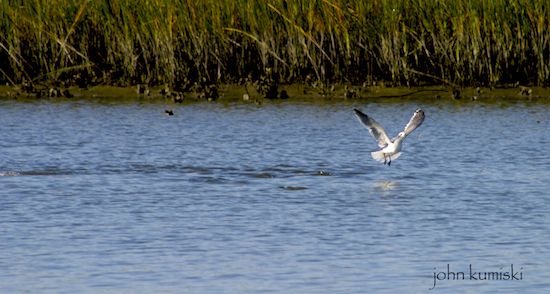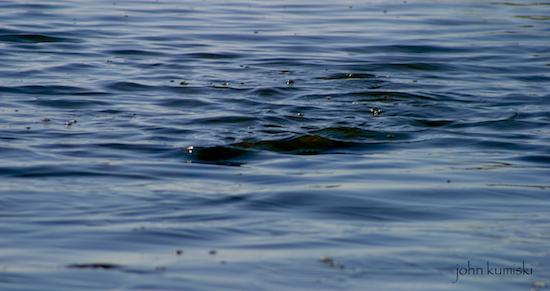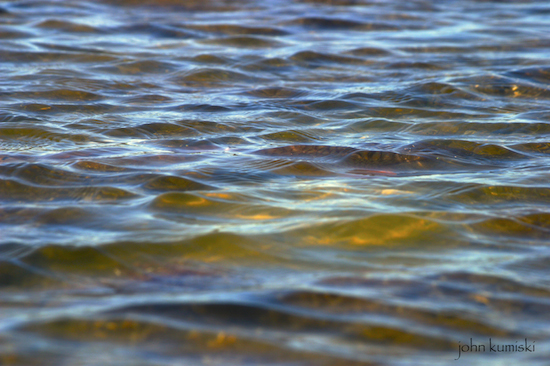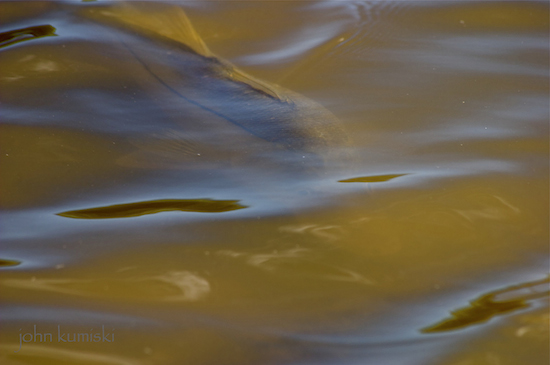Steps to Successful Sightfishing,
or,
How to Sight Fish
Two anglers have a boat, and have begun fishing a large flat they don’t know. Do they have any chance of success?
It depends on how hard they search. This situation requires extensive hunting. Follow the tips below to make your next trip more successful.
To succeed at sightfishing you need two items of equipment. The first is a broad brimmed hat. The underside of the bill should be dark, which reflects less light onto the face, reducing glare. You also need the best quality polarized sunglasses you can afford. Shallow water anglers should use brown or dark amber lenses. The right glasses are extremely important.
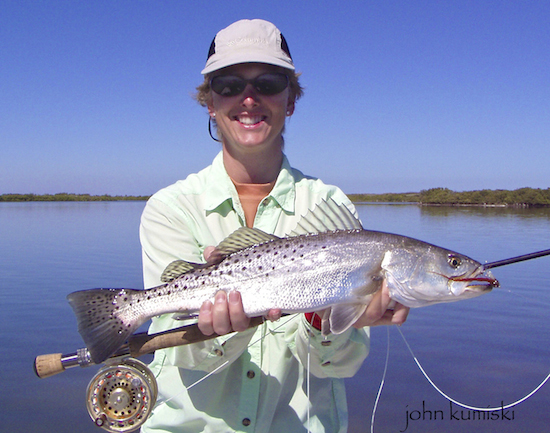
Polarized sunglasses with brown or dark amber lenses and a hat with a dark visor will let you see fish like this nice trout while they are still in the water.
Begin by moving fairly rapidly. Look for any signs of life, especially bait. Nervous baitfish are a wonderful find, and deserve some casting. The presence of sharks or rays may also indicate fish.
Work different types of habitats. Points, creek mouths, the windy side of bays, the sheltered side of bays, drop-offs, channels, and oyster bars, all could hold fish. Work them in succession.
On a cold day work a mud-bottomed, wind-sheltered shoreline with sunshine warming the shallows. The fish maintain a comfortable body temperature here. The windy side of a bay might be good on a warm day. Wave action oxygenates the water, and blows baitfish against the windward shoreline.
Work creek mouths when water flows out of them. The fish know the current carries bait.
Try around oyster bars or mangrove shorelines on the rising tide. The fish hunt in areas not accessible to them on low tide.
Birds have long been used by anglers to locate fish. Anytime terns start diving and screaming, it’s likely that fish are underneath. Blue herons and egrets also feed on baitfish. When wading birds work together in one area, they indicate the presence of bait. Most of the time predatory fish will be there too. Congregations of wading birds mean more to the fisherman than simple aesthetics.
A fish betrays its presence when causing disturbances on the water’s surface. Sunlight sometimes reflects off of the fins of tailing fish. You can see the flash from a surprising distance.
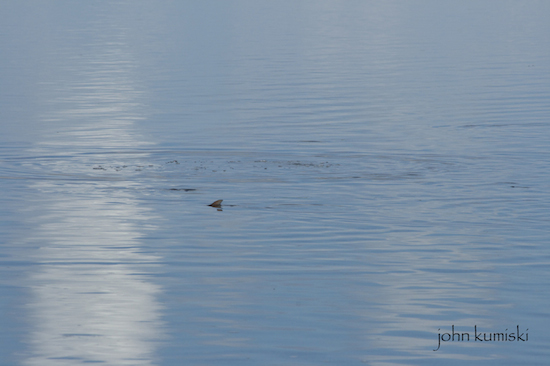
The tips of the tails of these redfish let you know there are some there. This school had about 100 fish, but you can only see one tail in this picture.
A fish cruising in shallow water pushes a wave up above it, known as a wake.
Look into the water. This is easiest when there is little or no wind, the sun is high in the sky and at your back, there are no clouds, and the bottom is light in color. Tilt your head back and forth to find the most effective angle for your sunglasses.
Keep your eyes scanning, looking for any break in the patterns you see there. Scan back and forth, from close in to the boat to the limit of visibility and then back in close again.
What do you look for? Not a fish, but anything that might be a fish. Don’t expect to see a goldfish in a bowl. You are looking for subtle clues- muds, movement, flashes, differences in color.
Watch underneath birds when they fly close to the water surface. As they pass over fish, the fish spook and jump.
Listen for fish. Tailing fish splash. Quiet anglers can hear them. The distinct feeding pops of trout or snook are very easy to hear.
If you see something that looks like it might be a fish, cast to it! You usually can’t see the entire fish. Seatrout over grass are very hard to see. Their dark backs blend in perfectly with grass. They often lie motionless over grassy bottoms, particularly around the edges of sandy areas. Often the only clue you have to a trout’s presence is its tail, a little lighter in color than the background, with a darker band along the back edge. Check it out with a cast!
Never ignore anything. You’re a hunter and have to behave like one.
Practice these techniques. Soon you’ll be able to see things that others can’t. You catch more fish, and get more enjoyment from your fishing.
John Kumiski
http://www.spottedtail.com
Copyright © John A. Kumiski 2022. It is illegal to reproduce or distribute this work in any manner or medium without written permission from the author, John A. Kumiski, 284 Clearview Road, Chuluota, FL 32766 (407) 977-5207.
If you found this article useful and would like to donate to Spotted Tail, please click here…
![]()

